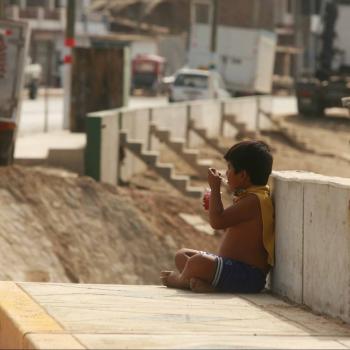
Young Lives is working with the UNICEF Office of Research Innocenti on a study of what drives violence against children and what can be done about it.
The study identifies and analyses how structural factors - the social, cultural, economic, legal, organisational, or policy responses) interact to affect everyday violence in children's homes and communities.
Its aim is to identify causal pathways to inform national strategies for violence prevention. Unpacking the drivers of violence, focusing on girls and boys at different stages of the life-course, from the very young to older adolescents, will contribute to comparative global and national evidence on why and how change happens. The main outcome will be improved interventions which are sensitive and responsive to variations by age and gender and that fully consider the needs of children and the adults who live with them.
The multi-country study combines research with programme practice to generate innovative platforms for global and national learning. Working with staff in UNICEF country offices and headquarters, the study team will promote research linked to programme (re)-design, implementation and measurement, in effect, the development of more contextualised approaches to violence prevention.
The research consists of three separate, but complementary strands of analysis. These questions explore the diverging trajectories of children experiencing different forms of violence (physical, psychological/emotional, abuse or exploitation). It will also address the intersections between structural forces such as a given political economy of a country and children's agency. Importantly, the combined analyses explore why some children experience violence but do not appear to have negative outcomes compared with other children.
- What are the key risk factors associated with children reporting experiencing violence in schools and what is the effect on later cognitive development and psycho-social well-being?
- What are children's diverging life paths after experiencing violence?
- Where and how do young people access support networks, information and services and for what purposes?
The results of this research will be used globally and nationally to inform work on violence prevention and advocate for enhanced policy addressing children's well-being.
Find out more
Multi-Country Study on the Drivers of Violence Affecting Children: Italy, Peru, Vietnam and Zimbabwe
Know Violence in Childhood
Key contacts
M. Catherine Maternowska, UNICEF Office of Research,Innocenti
Kirrily Pells, Young Lives Policy Officer (from 2016, Young Lives Research Associate)

Young Lives is working with the UNICEF Office of Research Innocenti on a study of what drives violence against children and what can be done about it.
The study identifies and analyses how structural factors - the social, cultural, economic, legal, organisational, or policy responses) interact to affect everyday violence in children's homes and communities.
Its aim is to identify causal pathways to inform national strategies for violence prevention. Unpacking the drivers of violence, focusing on girls and boys at different stages of the life-course, from the very young to older adolescents, will contribute to comparative global and national evidence on why and how change happens. The main outcome will be improved interventions which are sensitive and responsive to variations by age and gender and that fully consider the needs of children and the adults who live with them.
The multi-country study combines research with programme practice to generate innovative platforms for global and national learning. Working with staff in UNICEF country offices and headquarters, the study team will promote research linked to programme (re)-design, implementation and measurement, in effect, the development of more contextualised approaches to violence prevention.
The research consists of three separate, but complementary strands of analysis. These questions explore the diverging trajectories of children experiencing different forms of violence (physical, psychological/emotional, abuse or exploitation). It will also address the intersections between structural forces such as a given political economy of a country and children's agency. Importantly, the combined analyses explore why some children experience violence but do not appear to have negative outcomes compared with other children.
- What are the key risk factors associated with children reporting experiencing violence in schools and what is the effect on later cognitive development and psycho-social well-being?
- What are children's diverging life paths after experiencing violence?
- Where and how do young people access support networks, information and services and for what purposes?
The results of this research will be used globally and nationally to inform work on violence prevention and advocate for enhanced policy addressing children's well-being.
Find out more
Multi-Country Study on the Drivers of Violence Affecting Children: Italy, Peru, Vietnam and Zimbabwe
Know Violence in Childhood
Key contacts
M. Catherine Maternowska, UNICEF Office of Research,Innocenti
Kirrily Pells, Young Lives Policy Officer (from 2016, Young Lives Research Associate)

